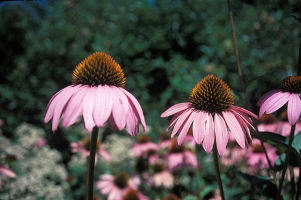Purple coneflower is the source for Echinacea, a very popular herbal remedy for the common cold and flu.
Photo Credit: © John J. Mosesso, National Biological Information Infrastructure Digital Image Library.
Echinacea purpurea
Common Name: eastern purple coneflower
Plant Functional Group: Forb
Class > Order > Family: Magnoliopsida > Asterales > Asteraceae
